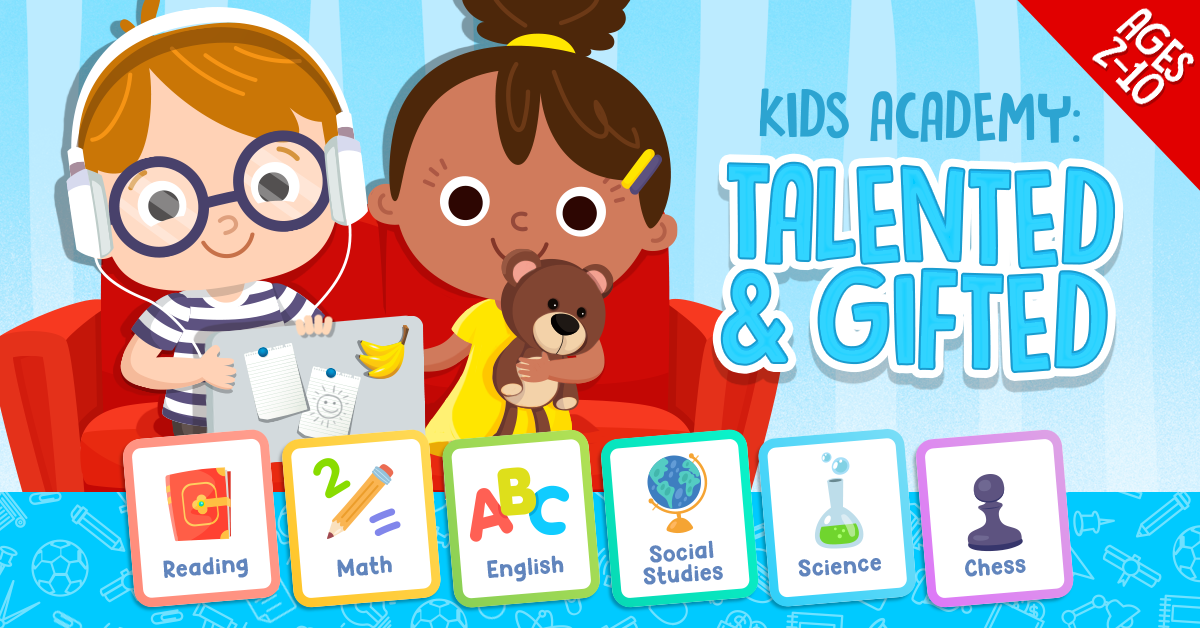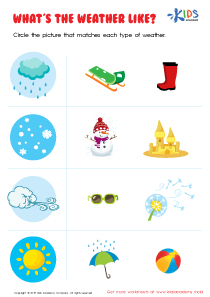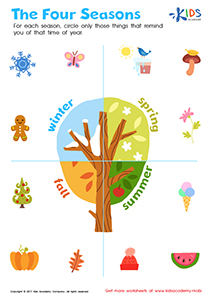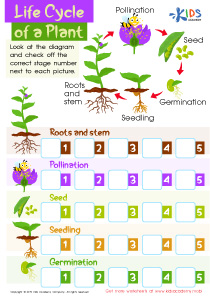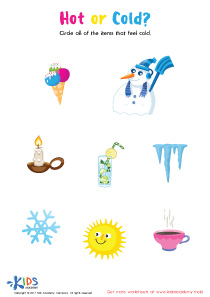Weather Vocabulary Normal World Around Us Worksheets for Ages 3-5
3 filtered results
-
From - To
Explore our engaging "Weather Vocabulary Normal World Around Us Worksheets" designed for children aged 3-5! Perfect for early learners, these worksheets introduce essential weather-related terms through fun activities. Kids will enjoy interactive exercises that encourage vocabulary acquisition, comprehension, and retention in a playful context. With bright illustrations and simple prompts, these resources make learning about clouds, rain, sunshine, and snow exciting! Foster a love for nature and science as children classify different weather types while developing motor skills. Ideal for classroom use or at-home learning, these worksheets support foundational literacy and provide a captivating educational experience. Start exploring the weather today!
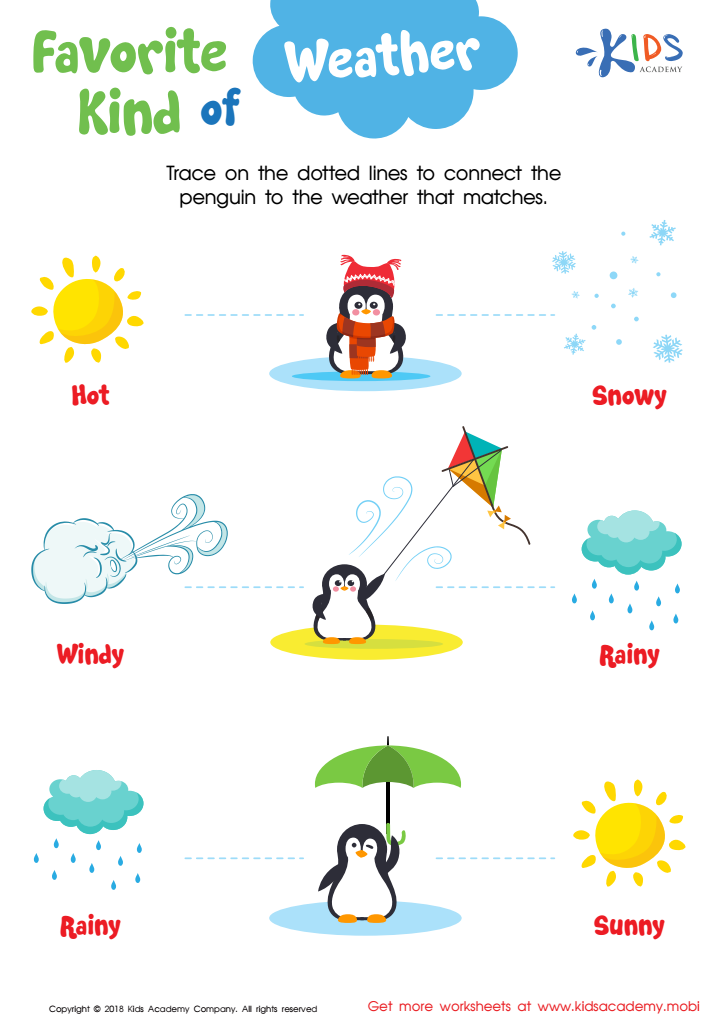

Favorite Kind of Weather Worksheet


Different Kinds of Weather: Windy and Snowy Worksheet
Teaching weather vocabulary to young children aged 3-5 is essential for several reasons. First, it connects children to the world around them, helping them understand their immediate environment. By learning terms related to weather, such as sunny, rainy, windy, and snowy, children can articulate their experiences and feelings about different weather conditions, which fosters communication skills and self-expression.
Second, weather vocabulary encourages curiosity and scientific inquiry. As children discuss and explore weather patterns, they begin to ask questions about concepts like temperature and seasons, promoting critical thinking and observational skills. This foundational knowledge can spark an interest in science and the natural world, laying the groundwork for future education.
Moreover, understanding weather vocabulary helps enhance safety awareness. By recognizing terms related to extreme weather, children learn to identify potentially dangerous situations—such as storms—cultivating a sense of responsibility and personal safety.
Finally, facilitating discussions about weather can strengthen relationships between parents, teachers, and children. Engaging in weather-related conversations creates opportunities for bonding, and it can also enhance learning through fun activities that involve observation, art, and storytelling.
In summary, teaching weather vocabulary is a vital component of holistic development, enriching language, cognitive skills, safety awareness, and relationship-building.

 Assign to My Students
Assign to My Students






